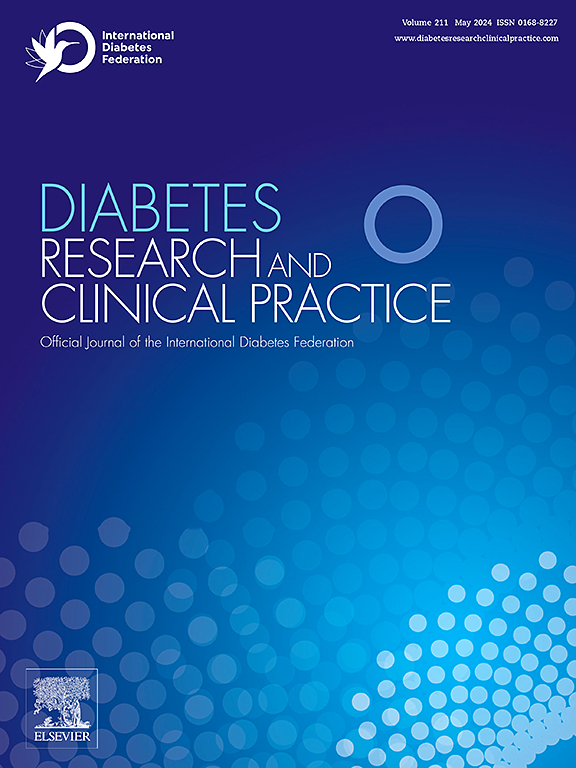Real-world evidence supporting the use of advanced hybrid closed loop in poorly controlled type 1 diabetes patients
IF 6.1
3区 医学
Q1 ENDOCRINOLOGY & METABOLISM
引用次数: 0
Abstract
Background
The advanced hybrid closed loop (a-HCL) algorithm includes automated basal and correction bolus insulin with customizable glucose targets. This study aimed to evaluate the effectiveness of a-HCL compared to predictive low glucose suspension (PLGS) and standard hybrid closed-loop (s-HCL) systems and to identify patient populations experiencing the greatest glycemic improvement after transitioning to a-HCL.
Methods
This retrospective study included type 1 diabetes patients at the University Hospital Zurich, Switzerland, who transitioned from PLGS or s-HCL to a-HCL between January 2020 and December 2021. Glycemic metrics, including HbA1c, time in range (TIR), time above range (TAR), time below range (TBR), sensor glucose (SG), and coefficient of variation (CV), were analyzed pre-and post-a-HCL implementation, considering clinical parameters influencing outcomes.
Results
Among 71 patients, a-HCL implementation significantly reduced in HbA1c (7.2 ± 0.9 % to 6.8 ± 0.5 %, p < 0.001), SG (8.8 ± 1.4 mmol/L to 7.8 ± 0.8 mmol/L, p < 0.001), TAR (26.3 % to 17.3 %, p < 0.001) and increased TIR (68.5 % to 79.8 %, p < 0.001). TBR and CV showed no significant changes. Improvements were most pronounced in patients with higher baseline HbA1c, SG, CV and lower TIR, all indicators of poor glycemic control, and a BMI > 30 kg/m2.
Conclusions
Our findings support a-HCL utilization across all patients, particularly in poorly controlled type 1 diabetes patients.
求助全文
约1分钟内获得全文
求助全文
来源期刊

Diabetes research and clinical practice
医学-内分泌学与代谢
CiteScore
10.30
自引率
3.90%
发文量
862
审稿时长
32 days
期刊介绍:
Diabetes Research and Clinical Practice is an international journal for health-care providers and clinically oriented researchers that publishes high-quality original research articles and expert reviews in diabetes and related areas. The role of the journal is to provide a venue for dissemination of knowledge and discussion of topics related to diabetes clinical research and patient care. Topics of focus include translational science, genetics, immunology, nutrition, psychosocial research, epidemiology, prevention, socio-economic research, complications, new treatments, technologies and therapy.
 求助内容:
求助内容: 应助结果提醒方式:
应助结果提醒方式:


